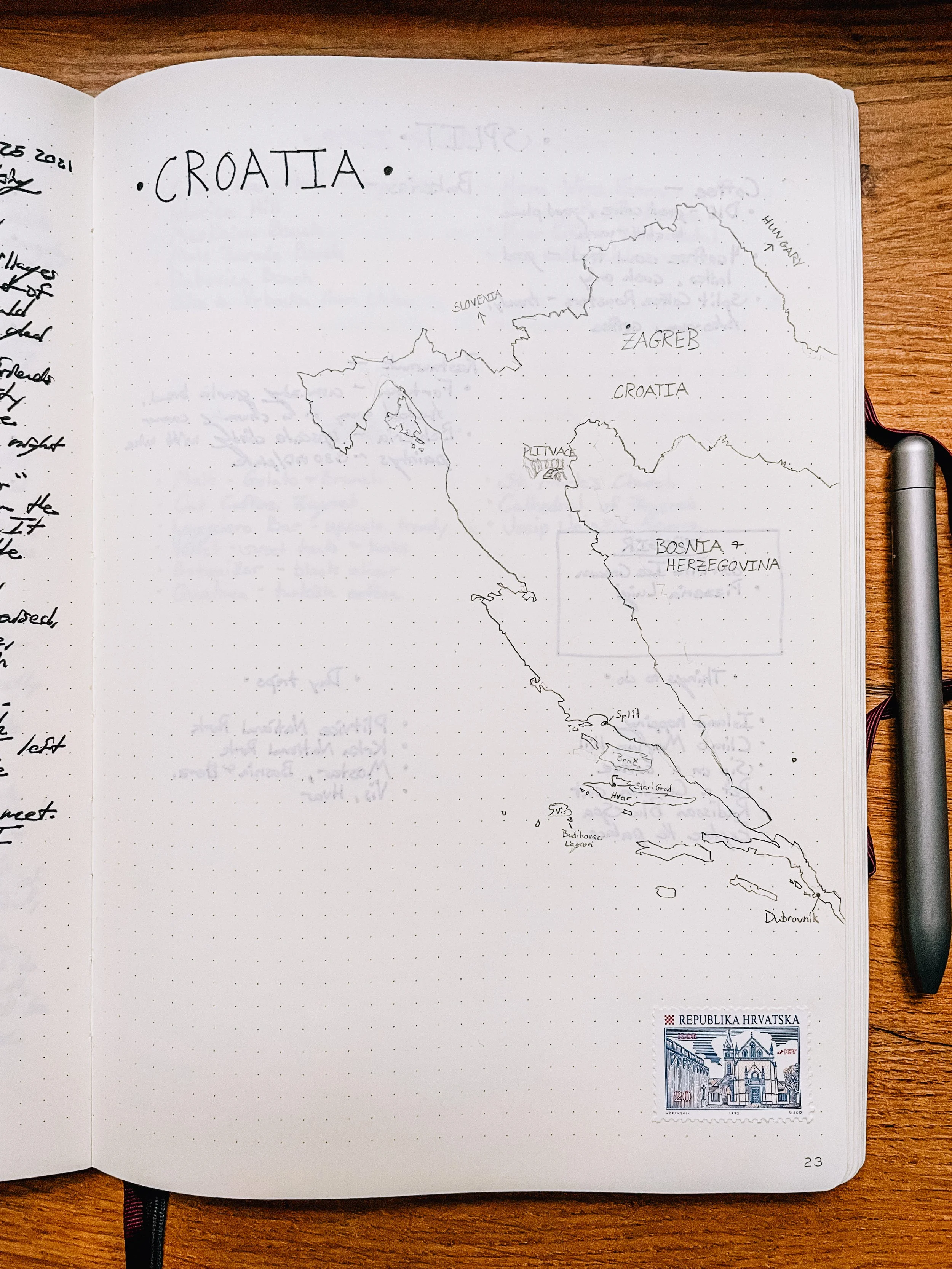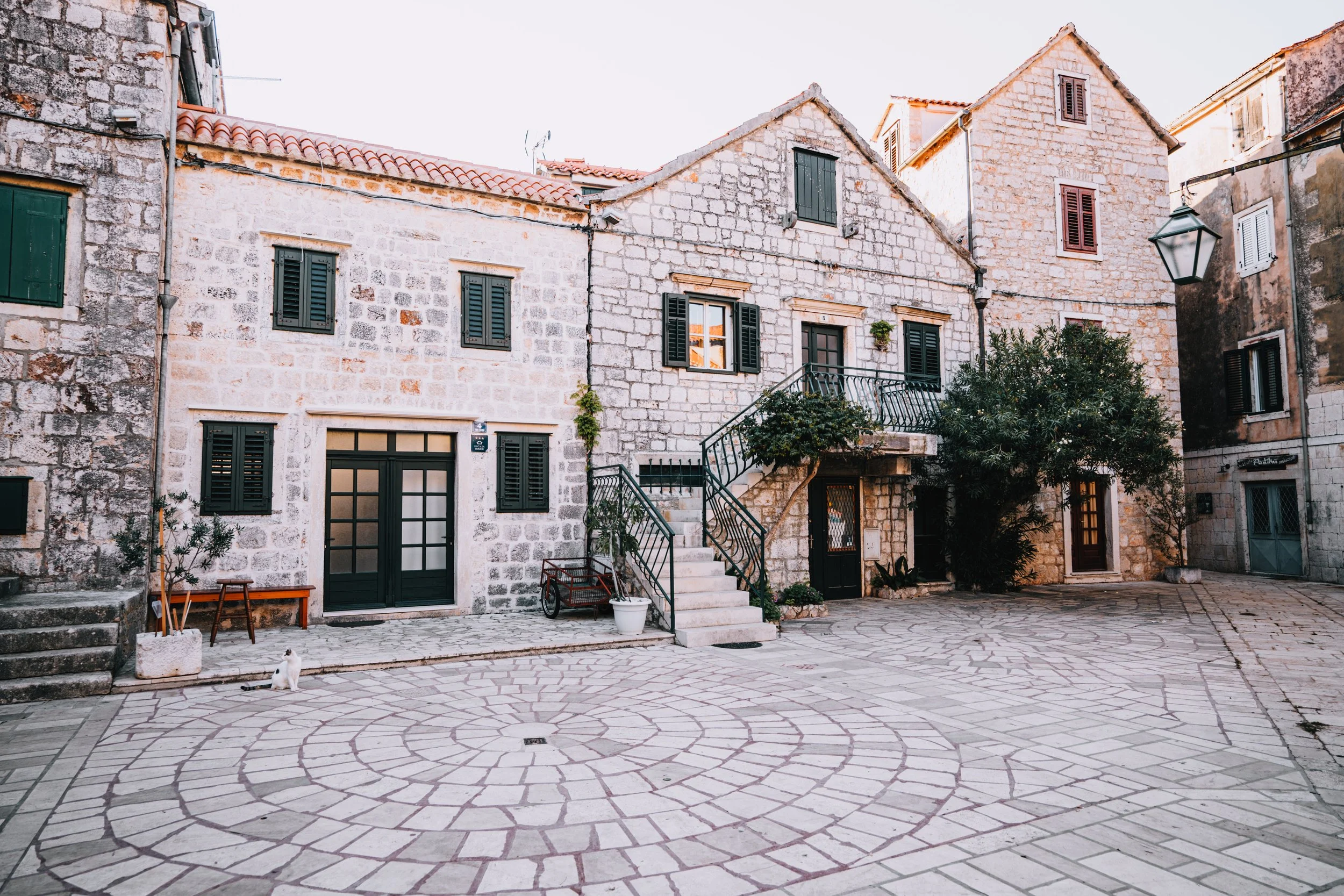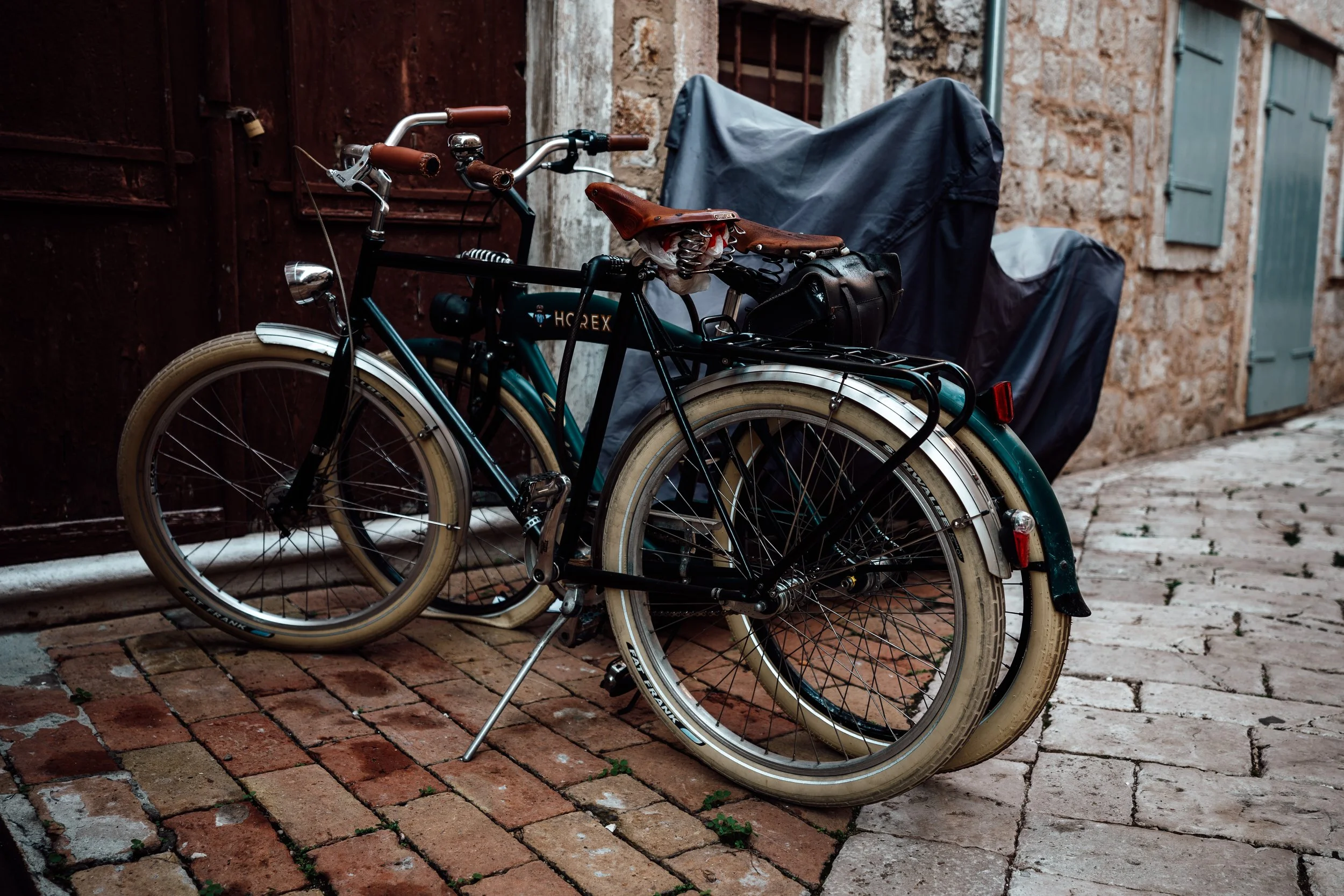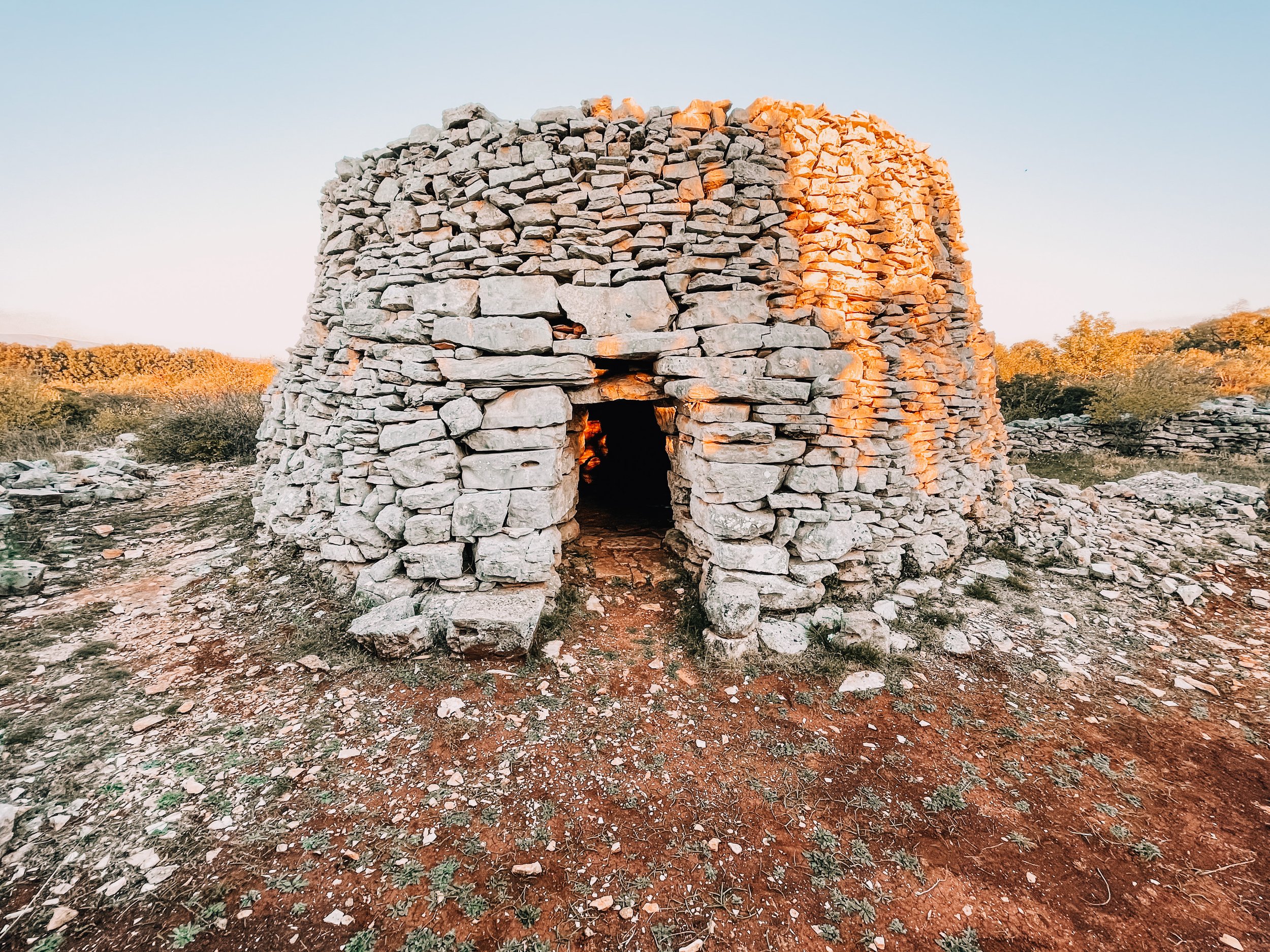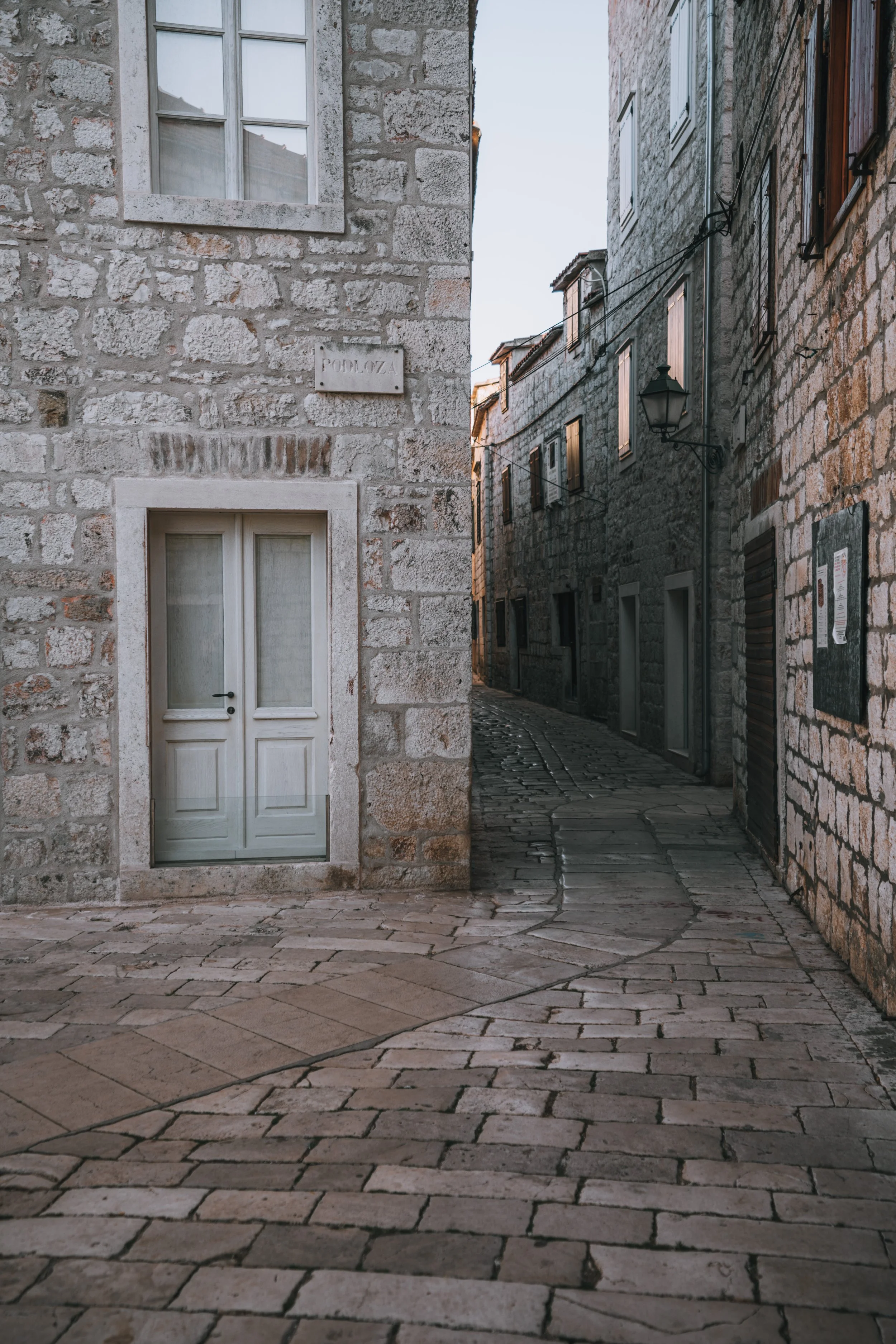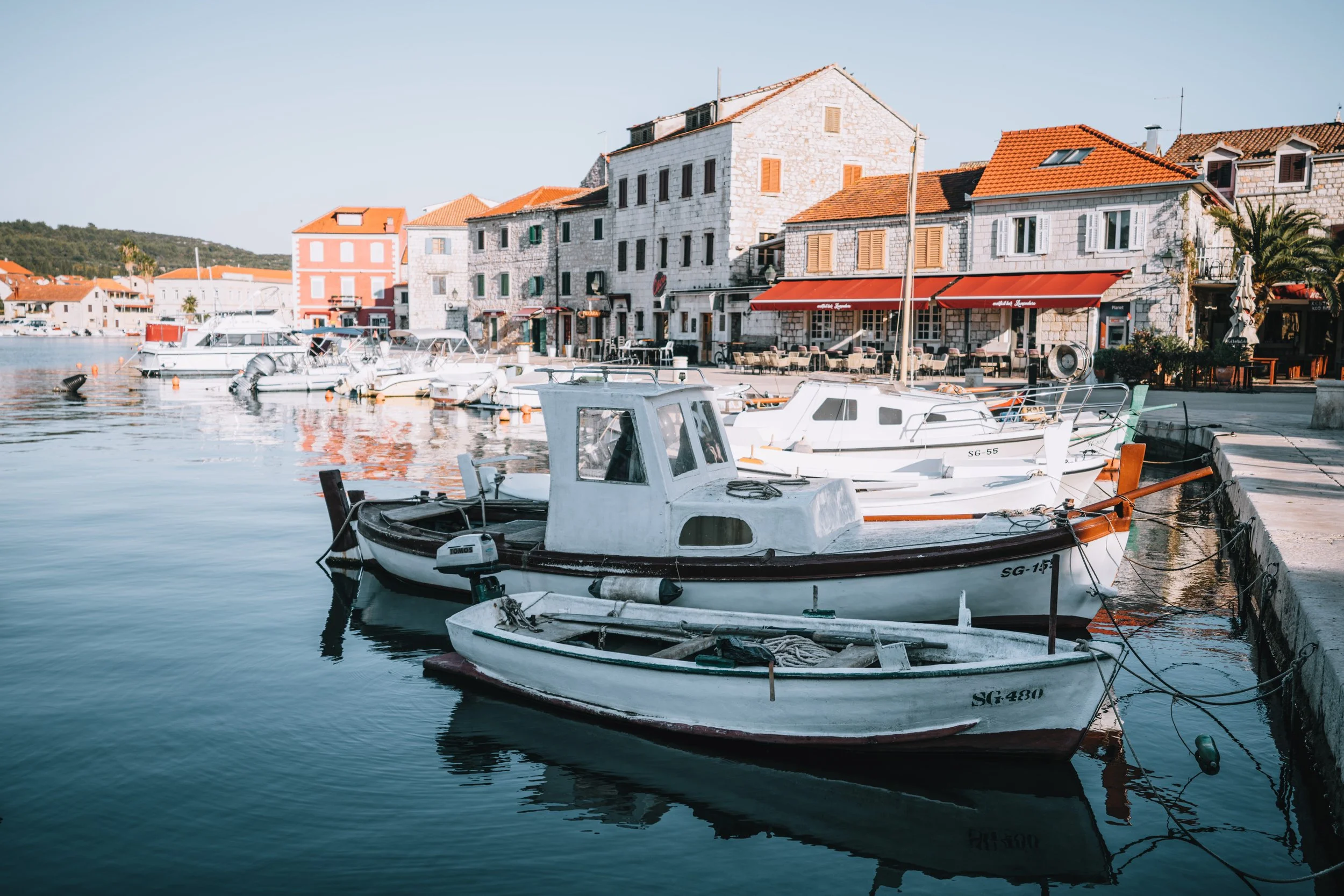A Week on Hvar

There are hundreds of islands off the coast of Croatia dotted with towns and villages that, at first glance, more or less look the same. But, each one has its own story, its own history, its own feel.
For awhile, I’d been looking for a place to spend a little bit of time to refocus, to set the screens down, to not have to be ten steps ahead in my mind. There’s an island just under two hours from the mainland called Hvar. The town Hvar, itself, gets a lot of attention as there’s a lot of tourism, and it tends to be the party capital of the surrounding islands. Most people stop there and don’t venture out, but just on the other side of the mountains is a quiet, forgotten village called Stari Grad, which in Croatian means “old town.” It’s a sleepy fishing village kept mostly by locals where moms still leave prams on the street by shop doors, and if you ask for a table at a restaurant, everyone will watch as you sit down as they try to figure out who you are. Our Airbnb host showed up at the ferry port to pick us up without us asking and seemed confused by how young we were. It’s an old corner of the world, tucked away, content to do its own thing. It was perfect.
Our friend Christine had just flown in from the States to spend some time with us, and we all caught the ferry on a Tuesday from Split and made the two-hour voyage across the channel. The ship felt more like a cruise liner than a car ferry. The interior hadn’t been updated since the sixties it seemed—though mid-century is in vogue. The cabin was hot and stuffy, so I spent some of the time in the open air on one of the upper decks watching the mountains drift by in the distance. No one seemed to care that I was out there.
Stari Grad just happens to be the oldest town in Croatia founded by the Greeks in 384…B.C. The main town sits at the end of a very long inlet. The surrounding hillsides are fairly wooded, and the harbor forms a “U’ shape leading to the town square. On the way in, I noticed a long peninsula on the north side of the inlet, full of coves and beaches, that looks largely uninhabited. I wonder what’s out there? The ferry docked in deeper water at a port just outside of town.
Most of the shops were closed for the season. This is a town that’s quiet in peak-season and virtually still the remainder of the year except for the few locals that call it home. The narrow, cobbled streets seemed much cleaner, and people seemed to take pride in keeping their corners neat. Each side street its own moment—plants neatly situated on steps in balance with the rest of the scene. There was thought and intention in it.
We settled on one of the three or four restaurants still open, and as I asked for a table, I felt the gaze of the dozen or so strangers watching me. Though, after we sat down, they went back to their conversations and seemed indifferent. The days were getting cooler, and the veggie risotto helped warm me up in the cool evening air. Tori befriended an orange and white cat that quickly learned to paw at her for a piece of chicken. He would sit quietly on the terrace next to her, and if she got too distracted in conversation, he’d reach up and tap her elbow to remind her that he was still there. He looked like a Tim, so I started calling him Tim. Though by the time the evening was out, we suspected Tim might actually be a girl. We tried to adapt the name. Timberly was all I could think of.
The next morning, I woke up before the girls and threw on a jacket before going for a walk. I enjoy the freshness of a new day—getting to see everything in new light, feeling like you’re one of the few in on the secret. Mornings are special, and I rarely regret the early hour once I’m out the door. There were a few more people out than the night before. A group of weathered old men huddled together by the sea at a bar aptly named “Hemingway’s.” Next door, people darted in and out of the local corner market surprisingly hurriedly. The routines seem to be carved fairly deeply; everything has its place. As I walked, I scanned the storefronts and cafés for coffee. To-go coffee doesn’t seem to be a thing here. Sitting on a terrace with a cappuccino and a book sounded nice, but with the abundance of looks I was getting and my general lack of a book, I decided to just keep walking.
Later, the three of us went looking for bikes to rent. There weren’t any, so we found coffee instead. Tori calls my mom to tell her about a potential opportunity in Vietnam, and I’m thinking about getting a scooter. I have no clue what I’d do for a year in Hanoi, but in my mind, I’m tan and there’s a scooter. There’s time to flesh-out the idea a bit more before then.
I finally find a number that works, and there’s a man on the other end that says he has bikes. We agree to meet him in half an hour and set out to find which of the three locations on Google Maps is the right one. He gives us a deal since it’s the low season but won’t accept a card. I offer him the cash in my pocket with the promise to pay the balance when we return. You can do that here.
The minimal electronics thing was going ok. Though, I did try and press pause on a book to stir the pasta on the stove. Turns out, it stays on the same page by itself. I was looking forward to exploring the island. Oddly enough, it’s been difficult to be present with a question mark over the future. My mind’s often three countries ahead. I was looking forward to just finding a road and getting lost.
The following morning I decided to wake up early and bike to the next town for coffee. It was the first morning of the season that I could see my breathe—which I didn’t notice until too far away from the apartment. The early morning sun was blinding as it spilled from over the hills into the valley. My hands, tingling in the cold, worked through the gears as I crested each hill. Occasionally, a SMART car would zoom past dangerously close—I guess because they don’t think they have to move over that far? What a sad way to go, I think to myself. At least if you got hit by a Jeep or truck, you could die with dignity. I keep peddling.
The little village of Vrboska was somehow smaller than Stari Grad. Houses sat on either side of a narrow inlet resembling a canal that gradually grew in width. Most of the shops were closed for the season, however one or two cafés showed signs of life. But, judging by the number of heads that turned as I passed, I decided to move on and look for coffee elsewhere.
The Stari Grad Plain is agricultural land that was divided up by the Greeks 2,400 years ago. The locals have maintained it since—stone walls marking where one field or vineyard ends and the next begins. Many of the marker stones have been removed and sent to museums in Zagreb so everyone can see the names of the families that worked the land and the dates that it was settled. As I continued, the road turned to rough gravel, and my teeth almost chattered as my tires drifted through the loose rock. I cruised through slowly—stopping to take in the scene or to check out an old Greek structure. Before, I’d been scouting everything on Google Maps—always having a loose plan in mind. Now, I was following road signs guided mainly by what looked interesting in the distance. This was what I had been looking for.
Back in Stari Grad, I settled into a café terrace overlooking the quiet harbor and sipped on a latte in the warming sun—content to read or just take in the scene.
The next day, I decided to take the girls for the ride through the plain to Vrboska. Once there, I was curious about the next town called Jesla. An unassuming road on the map followed the contour of the coastline linking the two towns. I mentioned the idea to the girls and maybe looking for coffee or gelato. Tori quickly said, Both!
We made our way along the harbor and followed the road as it disappeared around curves into a forest. Through the flickering trees, we could make out the turquoises and greens of the Adriatic. The soft sounds of the waves followed along with the steady clinking of our bike chains in the late-October breeze. I was still in a t-shirt. We stopped for photos and to ramble along the jagged rocks before continuing on. A small cove held a sandy beach that steadily descended into the clear water. After a few more twists and turns, another harbor began to come into view. I coasted toward it. A lone sailboat cruised toward open water beneath the watchful gaze of a medieval church tower—shops and houses congregated around it. The sun hung low in the waning days of autumn bathing the whole scene in golden light. We found a café and settled in amid the quiet, cobbled streets. A kind older man greeted us and invited us to survey the day’s treats. The girls each picked out a slice of cake, and I opted for baclava—with coffee, of course. There weren’t many people around, but the ones that were seemed to be as content as we were.
On the way back, I detoured down a gravel path along the ancient stone fences and past Greek ruins. The fields and vineyards were clothed in the last light of the day. In between teeth chattering and tires drifting, we paused to traipse through the weeds to what looked to be the foundation of an ancient farmhouse. Stones were stacked forming a circular structure leaving an opening for a door and no windows. Longer, flatter stones were wedged into the exterior forming a spiral staircase that lead to the roof—which was also stacked stone. I climbed the stairs but was hesitant to go any further. The fourth century B.C. was a long time ago. We picked up the bikes and headed back toward town in the fading light. Timberly passed us on the way to the grocery store.
It’s funny how most adventures start with the hope of seeing something interesting. There’s not always a guarantee, yet we draw out of our comfort zones and subject ourselves to the elements for the allure of what could be around the next bend.
On our last full day on the island, I decided to get up early and explore a peninsula that looked uninhabited. It formed the northern boundary of the inlet and extended west toward open sea. I noticed barren rocks and craggy beaches from the ferry on the ride in and was intrigued. Wanting to make the most of her short visit, Christine decided to join me as well.
We knew there was an incredibly steep hill leading out of town, but past that, it was a few blurry images on Google Maps. The ride into town was quiet. As I coasted around the bends of the narrow highway, the morning chill crept its way across my knuckles. The sun crested over the peaks illuminating the wisps of fog that had settled in the valley. The church tower stood above it all darting in and out of view around trees and stone houses. I made my way toward it—down narrow, cobbled streets past rows of weathered, green shutters. The village stood still except for the clacking of bike chains in the corridors. I rounded a tight corner, and the tires slid out from under me leaving me standing. Better walk.
Passing the town square, I picked our way through the patchy, torn-up road as construction workers gathered their tools for the day. The hill grew slowly then sharply rising high above the church and valley below. We walked the bikes. This isn’t the Tour de France. On top, the old asphalt road wound its way around the hilltops guided by ancient stone fences. On each side, olives hung from branches as they have for the ages. We found our way through intersections and clusters of houses as the road narrowed. The single lane took us past ruins of an old village—foundations and walls still standing but the roofs and doors long gone. The road twisted and wound downhill, and my mind immediately went to the return. At the foot of the hill, the pavement disappeared: the color turned to a rusty orange layered with dirt then rock then loose gravel. We’d see how much our skinny tires could handle. I coasted over the transition, and my tires settled into a worn groove. I scanned for larger rocks, and occasionally a softball-sized one would grab my rear wheel and send it sideways. I’d lean and correct quickly refocusing my gaze forward again. We crept along at a slow enough pace to keep from going down too hard if one of us ate it. The track was surprisingly wooded—occasionally opening up to the sea far below. My front tired dug into deep gravel, and I wondered if Christine would want to hang out again after this. The elevation started varying a bit, and the prospect of skidding down loose grave in and out of ruts seemed less than attractive. “What do you think about hiding the bikes and walking the rest?” Christine was on the same wavelength.
As we made our way up and down the rough road, it was quickly apparent we’d made the right choice. It was at least three miles to the point where we hoped to find something. We chit-chatted along the way occasionally stopping to take in the Adriatic blues. The same ferry we’d taken days earlier was rounding the corner into the inlet, and I wondered if anyone else was wondering what was out here. Maybe they had a better view.
As we neared the westernmost point, the road dropped and turned sharply back to the east. We followed it until we hit a dead end in the trees. Really? I thought to myself. Along the edges of the gravel, I picked up a faint trail and followed the sound of waves through the shrubs. At the end, the path opened to a narrow beach that descended shallowly into stunningly blue water. Guarded by high walls, the sea was calm and brushed quietly against the shore. Finally. I rambled over the rocks a bit before finding a place to settle and rest for a moment. From the north of the island, I could see across the channel to the island Brač—its limestone peak towering in the haze above the sea. A single boat was crossing in the distance. Lost in my thoughts, my gaze had settled on the steady flow of the water. It drew out rising onshore unevenly spilling and pooling through rocks and crevices before falling back into the sea. If you looked through the clear water, the refractions made it seem as if the ocean floor was rising and falling as well in subtle, unhurried breathes. It’s a rhythm as old as time—older than the Greeks who found this place or the generations that call it home now. It’s these quiet places—outside of the busy lives we create—that I’m reminded of what is real and lasting. In the meantime, Christine had found a pink Croc and was trying to move it but managed to fling it right at my face.
The way back seemed longer since we knew what was ahead. We could feel how far away we were now. There was a sense of anticipation and relief at each point that’s bittersweet: reaching better terrain, finding the bikes, returning to pavement, not crashing on the hill. It’s exciting because you’re one step closer to “home” but also a little sad because that part of the journey is behind you. Trips like these aren’t as much about getting to one place; it’s casting a line and seeing what catches. It’s going and returning with a little more for the simple reason you have gone.
The last morning, I wake up early once again and carry pen and paper with me to the local terrace on the harbor. The waitress asks if I want a latte, and no one bats an eye as a sit down. I pen a few thoughts and sip on my coffee, and for a moment, I’m part of the scene—on the shores of the Adriatic in this quiet corner of the world—before moving on.
